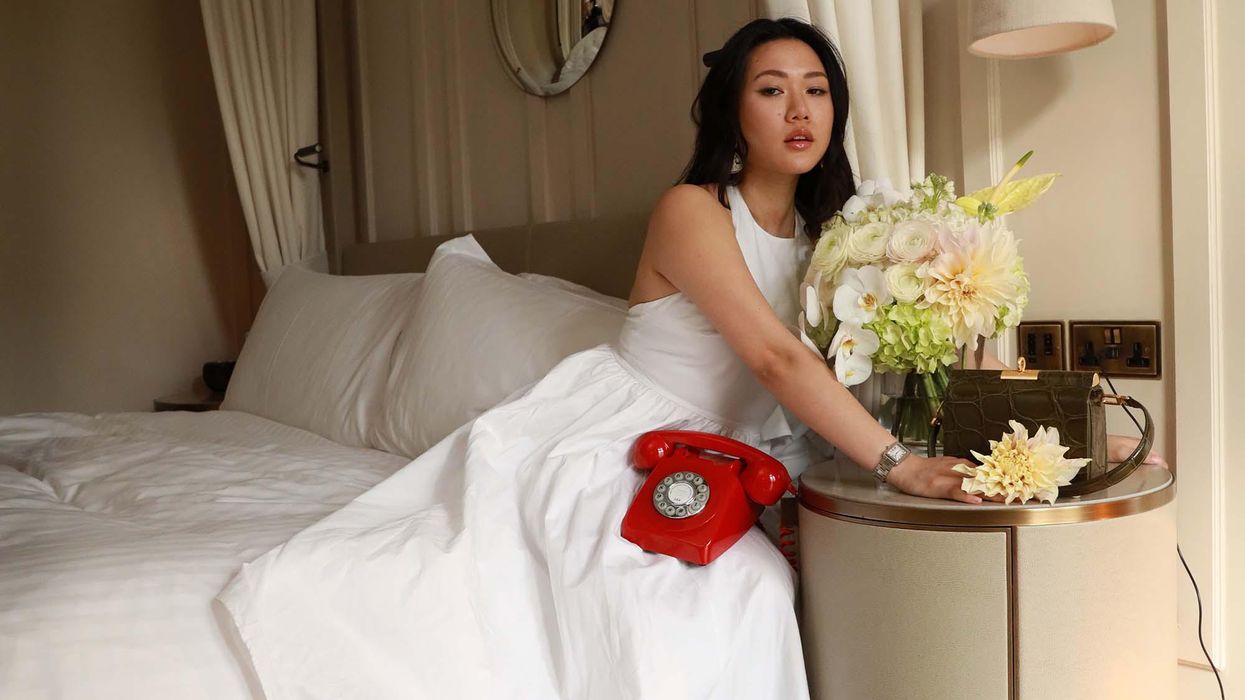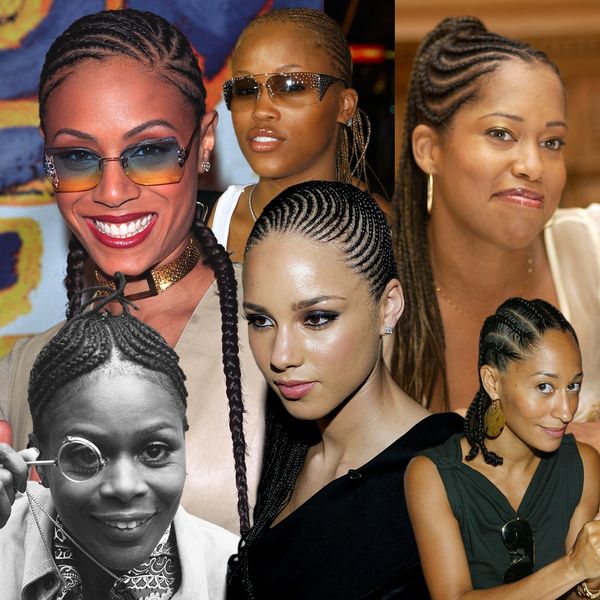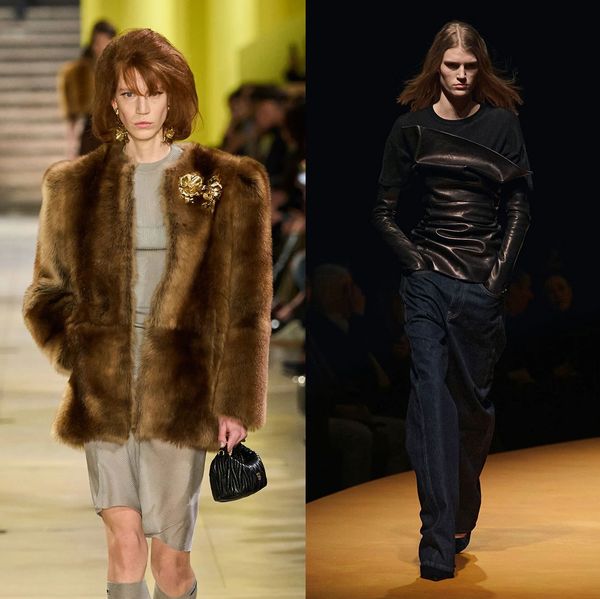What to Look for in Sustainable Fashion Brands
TikTok star Andrea Cheong walks us through what you need to know.

After watching Andrea Cheong’s videos, you may never shop the same. ‘Sustainability’ has been fashion’s favorite marketing buzzword for as long as I can remember, and yet fashion remains one of the worst industries for the environment. So how can you discern what brands use sustainable practices and what garments have been built to last? Leveraging her extensive fashion knowledge and industry experience into garment reviews, Cheong runs through aspects of clothing manufacturing that help determine their quality: What can the seams, lining, and composition tag indicate about how a Massimo Dutti or Zara coat was made and how it will endure? And are these aspects fairly reflected in the price? Below, Cheong discusses why she founded the Mindful Monday Method, her mental health-focused program to aid others in improving their shopping habits, and gives her top red and green flags when determining whether a brand is actually living up to its sustainability claims.
@andreacheong_ This is why consumers are so distrusting #samsoesamsoe #sustainablefashiontiktok #mindfulmondaymethod #sustainablestyle #winterfashion2021 ♬ original sound - Andrea Cheong
When did you begin posting on TikTok and can you describe your relationship to the platform?
“I started about 9 months ago, my first proper attempt at using TikTok was to raise awareness about the campaign, Stop Asian Hate. I was really moved by how supportive TikTok is as a company, when it comes to activism. It encouraged me to try posting a few of my sustainable fashion videos (that previously existed only as weekly stories on Instagram).”
What is the Mindful Monday Method and what inspired you to create it?
“So the year is 2019, and I had been working as a full-time creator or “influencer” for a year or so. Frankly, it massively depleted my mental health. I didn’t like myself, I felt at loss at what I stood for and I was uncomfortable with my role within the fashion industry. I worked desperately hard every day to change, and I am still on that journey. Working on myself made me connect some dots.
“It’s called Mindful Monday, not Sustainable Sunday (as some people have suggested I change it to), because I want to highlight the importance of mental health and fashion. It’s actually five steps but all the videos you see on TikTok are focused on steps four and five: material composition and quality. Ultimately, we need to feel empowered by our purchase decisions. The mission is to “shop less, spend more mindfully.” The importance of sustainability actually came a few weeks into posting weekly store reviews (on a Monday, of course) on Instagram Stories. I realized quickly that if we truly understood what we're buying, how much less we would consume and the fewer impulse buys we would succumb to.”
How do you envision the role of sustainability in fashion’s future beyond being a marketing ploy?
“I don’t think everything is a marketing ploy. I do believe that brands, who are led by people like you and I, can change. What really needs to happen is accountability for what they sell to us and how they communicate it. Fashion Revolution has a great idea: fast-fashion retailers should also offer affordable repair services. In terms of communication, restrictions on how the words like ‘responsible,’ ’conscious,’ and ‘sustainable’ are used in messaging would be great.
“Also, genuine education through transparency is another way to be sustainable. It sounds simple but it’s actually terrifying for brands. It can’t just be an information dump on their website full of reports and jargon that most people would get a headache reading. But actual concise and relevant facts that show their customers exactly what they are buying, even if it’s not perfect because nothing ever is anyway.”
What advice do you have for people who are trying to consume fashion in a more sustainable way?
“It sounds like a plug but so many people have told me they’ve saved money from The Mindful Monday Method, so doing the steps is a start. Someone calculated I saved them £497 this year, and yes we are still in the first month of 2022!
“It teaches shoppers to stop relying on entire brands. Instead, learn what are the signifiers of a well-made garment and prioritize as much natural material as possible (for the sake of post-consumer journey because you know, planned obsolescence is a thing and sewing is a lost skill). Then I truly believe we can shop anywhere we need to. ‘Need’ being the operative word because sustainable fashion should not be for a certain income category, size, or aesthetic—it should be for everyone.
“You can adjust my Mindful Monday Method according to your goals. For example, someone who is vegan and disagrees with my recommendation of a responsible wool knit can still use the knowledge and examples I show about pilling, pricing, and the impact of other fabrics to make an informed decision of a suitable alternative.”
Red Flags
- When a sustainable brand… stakes their claim to it with recycled plastics. Recycled plastics are fantastic when replacing products that have to be made of synthetics. So categories like sportswear, swim, technical fabrics, waterproofs, and perhaps some occasion-wear. There is very little need for it in an everyday wardrobe.
- When a sustainable brand… has aggressive discounts and sales. I hold the unpopular opinion that sales can be helpful for introducing customers to a brand that may usually be out of their budget. It is a great way to show that this really is worth the investment in the future. However, triggering impulse buys with excessive time restraints like flash sales can be a problem. Also, small and sustainable brands often can’t afford to give dramatic offers so it really makes you wonder what the supply chain is being paid and if they actually are responsible.
- When a sustainable brand… does not last. A lot of labels are trying to capitalize on our desire to be more conscious and massively neglect the quality they’re selling us. I bought a pair of trainers last year, I was so excited—they went with everything and best of all, made of “corn” leather. Within a month, they had gaping holes on the inside canvas and were completely peeling apart. If a product doesn’t last, it doesn’t matter what it’s made of, it already needs to be replaced and by default, it is not sustainable.
Green Flags
@andreacheong_ Reply to @iidlehands thank you for the question 💕 #sustainablefashion #fashiontiktok #xeniaadonts #fashioninfluencer #fitcheck #howtolookrich ♬ original sound - Andrea Cheong
- When a brand… communicates transparency in a digestible way. It could look like how they price things or how many hours it takes to make a jacket, for example. I like how Attire demonstrates this for their customers.
- When a brand… shows you they are sustainable instead of telling you. Word of mouth probably holds the most trust these days, so let your business speak for itself. I think platforms like TikTok are an extraordinary way to market yourself for free or have people organically talk about you. I recently came across a designer vintage business called Archive Six, run by a woman of Thai heritage named “T”. She is a solo act but gave me so much time of the day because she’s so passionate about her business and the new rental offering she’s launching. And no, she didn't know it was for TikTok. Yes, she did give me permission to take pictures.
- When a brand… doesn’t rest on their laurels. It’s so easy to brand yourself as sustainable and multi-brand retailers, they need to stock this type of brand. And publications, they want to feature this because it’s in demand, whether or not it’s actually legit. But so often, these brands think it’s enough that they have a capsule collection or they used deadstock once. Like they got their PO and their PR, and they’re done. So it’s a green flag when they constantly re-evaluate what their customers want, they’re innovating and they’re always striving to be inclusive and giving back. We love brands like this!
Photo: Courtesy of Alise Jane
Want more stories like this?
The Forgotten Faces Of Sustainability
These Sustainable, Plastic-Free Beauty Products Are Changing The Game
A Guide To Sustainable Sweater Weather




